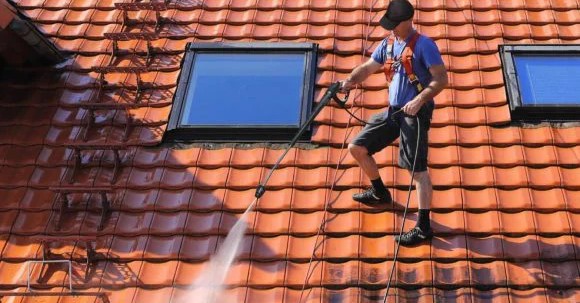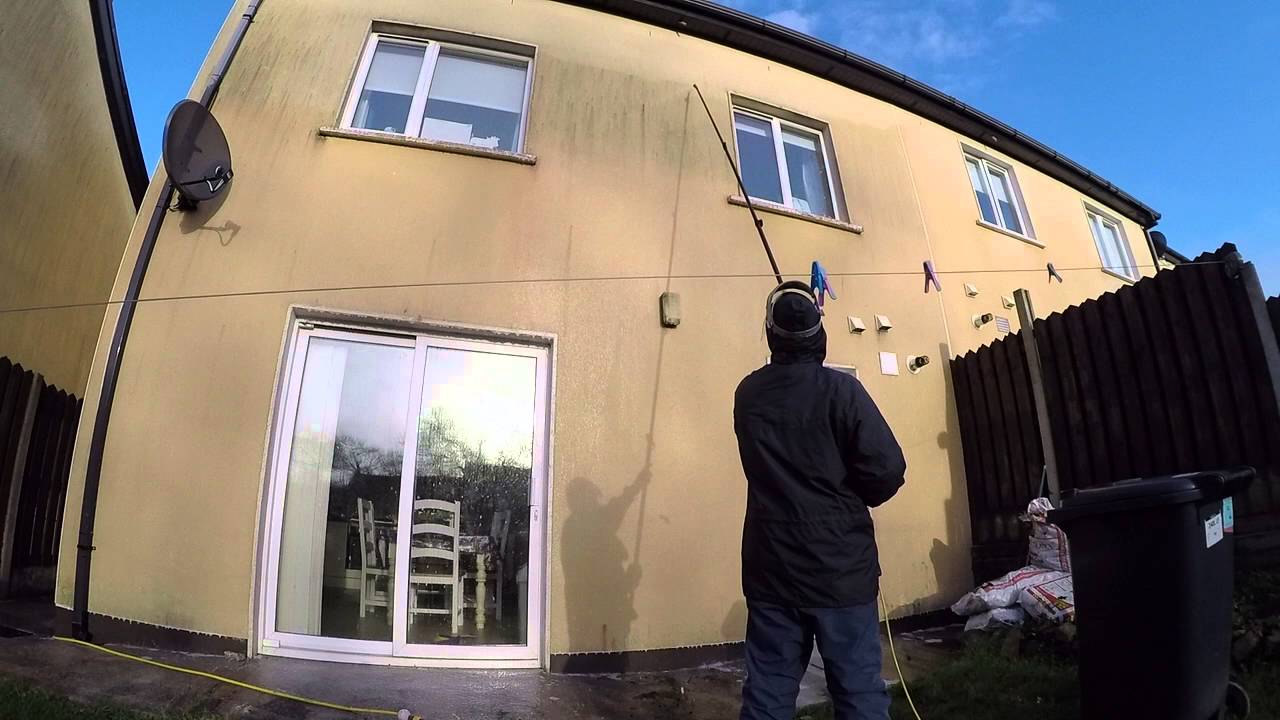Rendering can be a great addition to a house. It can add protection against moisture, can act as an extra layer of external insulation and it can also just improve the appearance of your home. But, since the render is outside and facing the elements, it can sometimes get a little bit dirty. When this happens, it can make your house look less than desirable and can make you feel like spending the money on getting your home rendered was all for nothing. When this happens, do not fret! We have tips from Rightwash on how you can clean render in a myriad of ways.
The best ways of cleaning render:

A light jet wash
You can clean the render with a light jet wash. This is how most companies will clean your render should you hire someone to do it. Jet washing is an easy way to remove dirt and grime from your render. Jet washing render is so popular that most places that apply and provide render will suggest a very light jet wash as the best method of cleaning render. Most jet washing will help to remove light discoloration, weathering, and algae growth.
It should be noted, though, that jet washing is not a suitable way of cleaning all render types. Modern render can take it, but older types of render will be eroded and damaged by a power wash. Things like clay, sand and cement, and pebbledash render, for example, may not hold up under pressure washing. If you’re unsure whether or not your render can cope, contact the provider.
Pressure washing
Pressure cleaning your render is also an option for the more modern renders. It is very similar to jet washing render, but applies heat, too. Just like with jet washing, you should be sure to check that your render will be able to cope with this kind of render cleaning before beginning, as some will need soft washing instead to protect the render surface.
Detergents
If you’ve noticed some small patches of mildew mold, discoloration, or even staining on your property, you can probably fix the issue with some generic household cleaners. Just as with any cleaning process, you should be sure to wear any necessary gloves and masks, but you should find that just taking some household cleaners and detergent and some soapy water out to your exterior walls will help to remove things like green algae, mold spores, staining or weathering.
If, however, you have extensive discoloration, you might need to get a ladder and a bigger brush or sponge, or perhaps consider getting some stronger detergents to tackle your issue. A suitable detergent will also help when used with a pressure washer, but as aforementioned, pressure cleaning is not suitable for every type of render. If detergents are not tackling the marks and stains on your render, you might need to find a way to treat the organic growth to help protect the render from staining permanently.
Biocide
Algae growth on external walls is incredibly common. It is more common in some renders than others, especially those with a porous nature. It should not worry you, though, as, with a bit of render cleaning, you can remove green algae growth from your walls completely.
You will need to find and purchase some biocide to remove algae growth. Apply this before the render cleaning process and again after you have finished cleaning the render. This should help to prevent mold growth or algae growth, helping to elongate the period between your exterior wall render cleaning.
Fungicide
Renders suffer from the growth of fungi and other greenery regularly. It usually causes some serious discoloration that can sometimes be mistaken as natural weathering. Fungi can build up and, if not treated with a fungicidal wash, can damage the surface of the render. This could lead to you needing to re-render your building, so it is important to target fungi as soon as possible. You can apply a fungicidal wash during and after your cleaning process to help prevent damage to your render and to make render cleaning much easier.
Re-rendering
If you have moved into a property that has been left alone by the property owners, or perhaps you have not been keeping up with your render cleaning, you may have no options when it comes to how to clean the render. You might just be faced with a damaged render that needs repairing. If that is the case, then you’ll need to re-render any rendered walls. You can hire a company to remove the existing render and render the home again. When this is done, it is worth setting up a routine to ensure that you maintain your rendered walls. It may also be worth investing in a self-cleaning render like silicone.
Is it easier to clean render me or hire someone to do it?
If your render has some small dirty patches, or you’re comfortable climbing up a ladder, you could save a lot of money by cleaning your render yourself. But if you aren’t sure which is the best method, or you are concerned about damaging the render, then it may be worth reaching out to professionals to get your render cleaned.
Professionals may also have methods of cleaning your render that you do not have access to at home. This can be beneficial and may work much better than other techniques like those listed above. But, bear in mind that hiring a team or a person to clean your render will cost a fair amount of money as it is a task that requires specialist equipment.
FAQ:
What can I use to clean my render?
Should you pressure wash the render?
How do you remove black stains from the render?
How often should you clean the render?
Conclusion:
Regular maintenance and cleaning can significantly extend the lifespan of your render and keep your building looking its best. By understanding the type of render, adopting gentle cleaning methods, conducting test patches, opting for eco-friendly solutions, and seeking professional help when needed, you can achieve outstanding results and ensure the long-term beauty and durability of your render.
